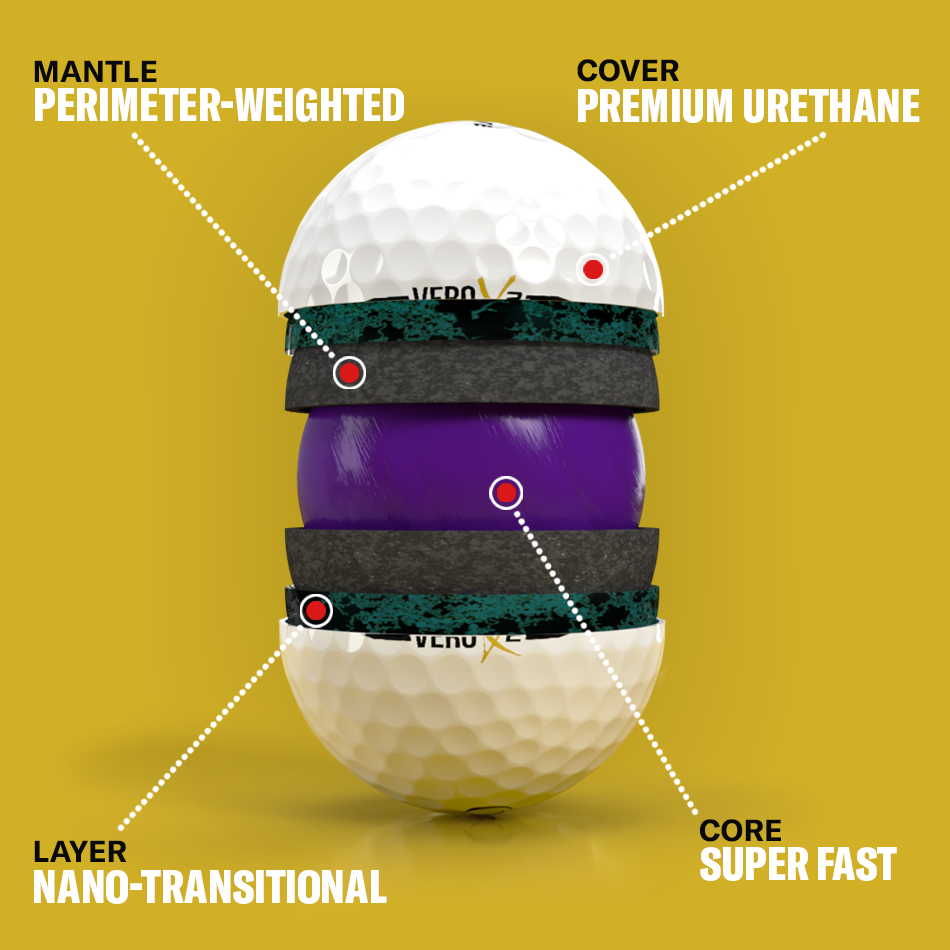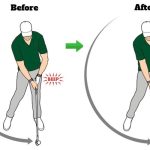Golf balls can travel up to 200 miles per hour. This speed depends on the golfer’s swing and ball type.
Golf ball speed fascinates many enthusiasts and professionals alike. Speed plays a crucial role in the overall game. A powerful swing can launch a ball at incredible speeds. The type of ball and club used also impacts the speed. Advanced technology in golf equipment allows for higher velocities.
Understanding these factors can improve your game. High-speed balls can cover more distance, giving you an edge. Proper technique combined with the right equipment leads to optimal performance. Every golfer aims for that perfect swing. Learning about ball speed offers valuable insights into enhancing your skills.

Credit: www.oncoregolf.com
Introduction To Golf Ball Speed
Golf is a game of precision and skill. One key aspect is the speed of the golf ball. Understanding how fast a golf ball travels can enhance your game. This knowledge helps in choosing the right club and shot technique.
Importance Of Speed
The speed of the golf ball affects many factors. It determines the distance the ball will travel. High speed leads to longer distances. This is crucial for driving off the tee. Ball speed also influences the spin. Faster speeds can create more spin, affecting ball control.
Basic Physics
The speed of a golf ball is influenced by several elements. The initial velocity plays a major role. It is the speed at which the ball leaves the clubface. The mass and design of the ball also matter. The angle of launch affects the trajectory and distance.
| Factor | Impact on Speed |
|---|---|
| Initial Velocity | Higher initial velocity means faster ball speed. |
| Mass of Ball | Heavier balls may travel slower. |
| Design of Ball | Dimples on the ball can reduce air resistance. |
| Launch Angle | Optimal angle helps in achieving maximum distance. |
Factors Influencing Speed
The speed of a golf ball is not just about how hard you hit it. Several factors influence how fast it travels. Understanding these factors can help improve your game. Let’s explore some key elements.
Material Composition
The material of the golf ball affects its speed. Golf balls are made from different materials. Each material provides unique benefits and drawbacks.
- Rubber Core: Provides more speed and distance.
- Urethane Cover: Offers better control and spin.
- Surlyn Cover: Known for durability and distance.
A combination of these materials can optimize speed and performance. The choice depends on what you need from the ball.
Design And Aerodynamics
The design of the golf ball is crucial. Golf balls have dimples on their surface. These dimples reduce air resistance and increase speed.
| Design Feature | Impact on Speed |
|---|---|
| Dimples | Reduce drag, increase lift |
| Symmetry | Ensures stable flight |
Aerodynamics play a significant role in speed. The shape and pattern of the dimples make a big difference. Proper design helps the ball travel faster and farther.
Role Of Golf Clubs
The Role of Golf Clubs in the speed of golf balls is crucial. Different clubs hit the ball with varying speeds and angles. Understanding how each club affects the ball’s speed helps improve your game.
Driver Vs. Irons
Drivers and irons play different roles in golf. The driver is used for long-distance shots. It has a larger head and a longer shaft. This design helps hit the ball faster and farther.
On the other hand, irons are used for shorter distances. They have smaller heads and shorter shafts. Irons provide more control but less speed. The choice of club affects how fast the ball will travel.
Impact Of Club Technology
Modern club technology has revolutionized golf. New materials and designs help increase ball speed. For example, titanium and carbon fiber make clubs lighter and stronger. This allows for faster swings and higher ball speeds.
Technological advancements also include adjustable weights and lofts. These features let golfers customize their clubs. Customization helps optimize speed and control. Here’s a quick look at some technology features:
- Titanium Heads: Lightweight and strong for faster swings.
- Carbon Fiber Shafts: Reduce weight and improve speed.
- Adjustable Weights: Balance the club for better control.
- Loft Adjustments: Fine-tune the angle for optimal speed.
Club technology continues to evolve. Each new feature aims to improve speed and accuracy. Understanding these features helps you choose the right club.
Swing Mechanics
Understanding swing mechanics is crucial for improving your golf game. The way you swing the club affects how fast the golf ball travels. Let’s dive into the core aspects of swing mechanics.
Technique And Form
Your technique and form play a significant role in swing mechanics. Proper posture and grip are essential.
- Stand with feet shoulder-width apart.
- Hold the club with a relaxed grip.
- Keep your back straight and bend at the hips.
These fundamentals ensure a stable and balanced swing. Practice these steps regularly to improve your technique.
Role Of Swing Speed
The role of swing speed cannot be underestimated in golf. Swing speed directly influences the distance the ball travels.
| Swing Speed (mph) | Ball Speed (mph) | Distance (yards) |
|---|---|---|
| 80 | 120 | 200 |
| 90 | 135 | 225 |
| 100 | 150 | 250 |
As your swing speed increases, so does the ball speed and distance. Focus on building your swing speed through targeted practice and strength training.
Environmental Conditions
Golf ball speed can change due to environmental conditions. These conditions include wind, weather, and course terrain. Each factor impacts the ball’s travel differently.
Wind And Weather
Wind can greatly affect the speed of a golf ball. A strong headwind slows the ball down. A tailwind can make the ball travel faster. Sidewinds can push the ball off course. Wind speed and direction are crucial to consider.
Weather also plays a big role. Cold air makes the ball travel slower. Warm air allows the ball to move faster. Rain can make the golf course wet and muddy. This slows down the ball after it lands.
Course Terrain
The terrain of a golf course affects the ball’s speed. A flat course allows for faster travel. Hills and slopes slow the ball down. Rough areas with tall grass impede the ball’s speed.
A table can help illustrate this:
| Terrain Type | Effect on Ball Speed |
|---|---|
| Flat | Faster travel |
| Hilly | Slower travel |
| Rough (tall grass) | Much slower travel |
Different types of grass can also change speed. Short grass makes the ball move quickly. Long grass slows it down. Sand traps and water hazards are other obstacles to consider. Each element of the course terrain impacts the ball’s journey.

Credit: medium.com
Professional Golfers Vs. Amateurs
Golf balls travel at different speeds depending on the player. Professional golfers and amateurs have varying skills and techniques. These differences affect how fast the golf ball travels.
Average Speeds
Professional golfers often achieve higher ball speeds. The average speed for professionals is around 170 mph.
Amateurs usually have lower ball speeds. Their average speed is closer to 130 mph.
| Player Type | Average Speed (mph) |
|---|---|
| Professional Golfers | 170 |
| Amateurs | 130 |
Training And Skill Level
Training plays a significant role in ball speed. Professional golfers spend hours practicing each day. They have refined their swing mechanics.
Amateurs may not have the same level of training. They often play golf as a hobby.
- Professionals have access to better training facilities.
- Amateurs might lack advanced coaching.
Skill level also impacts ball speed. Professionals have more experience and better control.
Measuring Golf Ball Speed
Understanding how fast golf balls travel is exciting. It helps golfers improve their game. Measuring golf ball speed accurately is crucial. Let’s explore the tools and methods used.
Technology And Tools
Modern technology makes measuring golf ball speed easy. The following tools are commonly used:
- Launch Monitors: These devices use radar or camera systems. They capture the ball’s speed right after impact.
- Speed Radars: Handheld speed radars are also popular. They measure the ball’s speed with a simple point-and-shoot mechanism.
- High-Speed Cameras: These cameras record the ball’s motion. They provide detailed data on speed and trajectory.
Launch monitors and speed radars are user-friendly. High-speed cameras need more setup. All these tools offer valuable insights.
Accuracy And Consistency
Ensuring accuracy and consistency is vital. Accurate measurements help in refining techniques. Consistency in data collection ensures reliable results.
Factors affecting accuracy include:
- Device Calibration: Proper calibration ensures the device works correctly.
- Environmental Conditions: Wind and temperature can affect readings.
- Placement: Correct placement of devices is essential for precise measurements.
Regular checks and calibrations are necessary. This ensures the tools provide accurate data consistently.
| Tool | Accuracy | Ease of Use |
|---|---|---|
| Launch Monitors | High | Easy |
| Speed Radars | Moderate | Very Easy |
| High-Speed Cameras | Very High | Complex |
Choosing the right tool depends on your needs. For basic use, speed radars are sufficient. For detailed analysis, high-speed cameras are better.
Records And Milestones
Golf balls can achieve astonishing speeds during play. Understanding the records and milestones of these speeds offers insights into the evolution of golf technology and player skills.
Fastest Recorded Shots
The fastest recorded golf ball shot reached a speed of 226.7 mph. This record was set by professional golfer Ryan Winther in 2013. Winther’s shot demonstrates the incredible force professional golfers can generate.
Another notable record is the longest drive in competition. This record stands at 515 yards, achieved by Mike Austin in 1974. Austin’s drive remains a benchmark for long hitters in the sport.
Historical Progression
The speed of golf balls has increased over the years. In the early 20th century, golf balls rarely exceeded 100 mph. The development of new materials and designs has significantly influenced this progression.
Below is a table showing the progression of golf ball speeds over the decades:
| Decade | Average Speed (mph) |
|---|---|
| 1920s | 80 |
| 1950s | 100 |
| 1980s | 120 |
| 2000s | 140 |
| 2020s | 160 |
The advancements in golf ball technology have resulted in higher speeds. Modern golf balls are designed for maximum velocity and distance. This evolution highlights the importance of technology in the sport.
Improving Your Golf Ball Speed
Improving your golf ball speed can significantly enhance your game. Faster golf balls travel farther and straighter. This increases your chances of achieving lower scores. Here, we provide insights on how to boost your golf ball speed.
Training Tips
Consistency in training is essential. Practice regularly to build muscle memory. Use drills that focus on improving your swing speed.
- Warm up before every session.
- Focus on your grip and stance.
- Utilize resistance bands to enhance strength.
- Incorporate high-intensity interval training (HIIT).
Strength training also plays a vital role. Exercises like squats and deadlifts can improve your power. Aim to strengthen your core and lower body.
| Exercise | Target Area |
|---|---|
| Squats | Legs |
| Deadlifts | Back |
| Planks | Core |
Choosing The Right Equipment
The right equipment can make a big difference. Start with a golf ball suited to your skill level.
- Beginners should opt for softer balls.
- Intermediate players can choose medium compression balls.
- Advanced players may prefer high compression balls.
Your choice of clubs is equally important. Ensure your clubs are the correct length and weight. Custom-fitted clubs can enhance your swing efficiency.
Club head design also matters. A larger sweet spot can increase your chances of a clean hit. Look for clubs with advanced aerodynamics to reduce drag.

Credit: medium.com
Conclusion And Future Trends
As the game of golf evolves, the speed of golf balls is changing. New technologies and innovations are pushing the boundaries. Let’s explore the conclusion and future trends in golf ball speed.
Innovations In Golf Technology
Recent years have seen significant innovations in golf technology. These advancements aim to increase ball speed. Here are some key innovations:
- Materials: New materials improve ball performance.
- Design: Aerodynamic designs reduce drag.
- Manufacturing: Precision manufacturing ensures consistency.
These innovations contribute to higher ball speeds. They also improve overall game performance.
Predictions For Speed Enhancement
Experts predict further speed enhancements in the coming years. Here are some predictions:
- More advanced materials will be used.
- Improved aerodynamic designs will emerge.
- Integration of smart technology for better control.
These predictions suggest an exciting future for golf. Players can expect faster and more efficient golf balls.
Frequently Asked Questions
What Speed Does A Golf Ball Travel In Mph?
A golf ball can travel up to 150 mph. Professional golfers may hit speeds over 180 mph.
How Fast Can Tiger Woods Drive A Golf Ball?
Tiger Woods can drive a golf ball over 320 yards. His swing speed often exceeds 120 mph, demonstrating immense power.
How Fast Do Pros Drive Golf Balls?
Pros typically drive golf balls at speeds between 110-130 mph. Top players can exceed 130 mph.
What Is The Average Ball Speed In Golf?
The average ball speed in golf ranges from 130 to 160 mph for male professionals. For female professionals, it’s typically between 110 and 140 mph.
Conclusion
Golf balls can travel at impressive speeds depending on various factors. Understanding these elements helps improve your game. Keep practicing to achieve better control and distance. Remember, the right technique and equipment are essential. Stay informed and keep experimenting to find what works best for you on the course.





